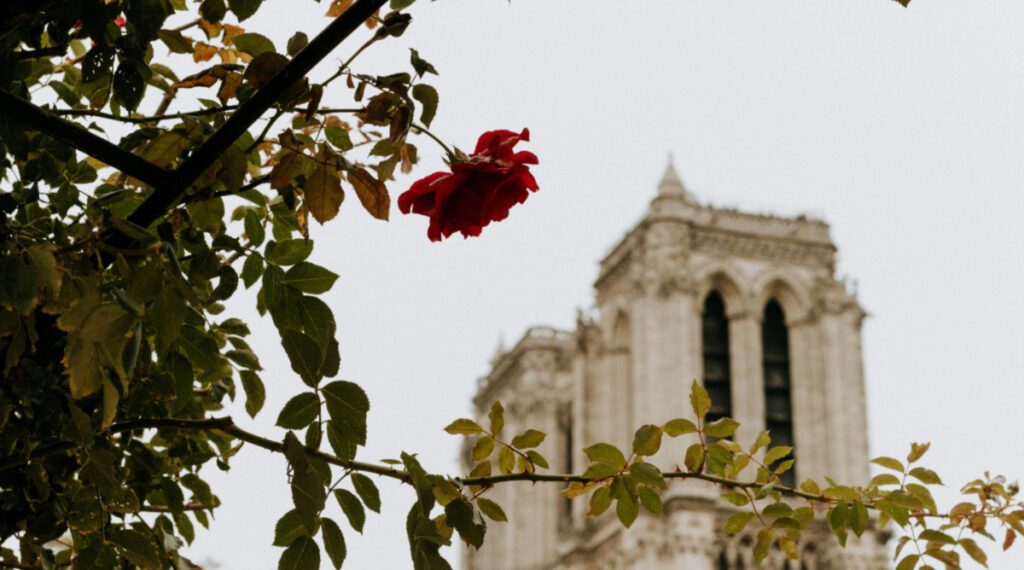In academic year 1988-1989 at the Catholic University of America, I was preparing for Ordination to the Diaconate and Priesthood. I was also finishing an STL in Systematic Theology and writing my STL dissertation with Fr. James Wiseman, OSB and Fr. Carl Peter on Blessed Elizabeth of the Trinity which would be entitled Elizabeth of the Trinity: Spiritual Transformation in the Last Retreat.
A decade later I did a doctoral dissertation at the Pontifical University of the Holy Cross in Rome on the 17th Century French School of Spirituality and the founder of the Sulpicians, the great instrument of Church reform and priesthood reform, Jean-Jacques Olier.
St. Elizabeth of the Trinity could be considered a rich heir of this 17th Century French School of Spirituality. In fact, in The French School of Spirituality: An Introduction and Reader, Fr. Raymond Deville writes: “Paul Cochois has pointed out that ‘it is not a coincidence that Elizabeth of the Trinity lived in a monastery [Dijon] where Berulle had always been honored.’”[1]
Fr. Deville once said to me in a personal conversation: “To understand St. Paul’s Letter to the Ephesians, you need to understand Elizabeth of the Trinity.”[2]
Providentially, Fr. Steven Payne, OCD, the Chair of Carmelite Studies at the Catholic University of America, asked me to speak on St. Elizabeth of the Trinity on July 30, 2024 at a Carmelite Symposium held at the Catholic University of America.
Providentially, Fr. Ignatius Schweitzer, OP, invited me to speak at a St. Elizabeth of the Trinity Conference at St. Joseph’s Seminary on August 9, 2024.
These kind invitations gave me the opportunity to have some powerful Elizabeth of the Trinity Revisitedmoments. I reviewed carefully my STL dissertation and discovered thirty-five years later that it remains a fine and relevant work that I could build on as I caught up with the new critical editions, Elizabeth’s October 16, 2016 canonization, and some of the new biographies, research and articles that have appeared in the period between 1989 and 2024.
From 1989 to 2024, scholars have thoroughly mined St. Elizabeth of the Trinity’s many letters to great advantage. They have further explored the biblical and literary influences on Elizabeth’s texts as well as her place among and her relationship to the great mystical feminine geniuses. Many analyses have further refined her view of spiritual transformation and her biblical-doctrinal ecclesial Carmelite vocation and mission as a Trinitarian Praise of Glory.
The process of re-immersing myself spiritually and academically in St. Elizabeth of the Trinity’s treatises, texts and letters as well as catching up on some of the academic research and scholarship between 1989 and 2024 has opened the door to many graces and an even deeper intercession of St. Elizabeth of the Trinity in the life and ecclesial mission of an American Bishop.
My synthetic review of the scholarship from 1989 to 2024 resulted in a focus on two themes in this presentation as reflected in the title: St. Elizabeth of the Trinity: The Pauline Audacity of her Lectio Divina and her Trinitarian Praise of Glory Catholic Mysticism.
We are all looking forward to the re-opening of Notre Dame Cathedral in Paris — a Catholic wonder of the world in its evangelizing Gothic architecture.
We pray in solidarity with Parisians and people from all over the world who are gazing at Notre Dame Cathedral while experiencing the Summer Olympics and treasuring Notre Dame Cathedral’s beautiful expression of the Catholic faith and the Catholic soul in art, architecture, liturgy and history.
The French Catholic Historian Henri Daniel-Rops (1901-1965) once stated: “Would not one of the most surprising paradoxes of our national history be this: that France, officially atheist, has been wholly penetrated with mysticism and that an immense current of fervor is circulating underground before surfacing through hundreds of springs?”[3]
May the springs and geysers of French Catholic mysticism and mission spring up through Notre Dame Cathedral, throughout the experience of the 2024 Paris Olympic games and throughout France and the Universal Church.
So many of these great French saints prayed in Notre Dame and were inspired in their ecclesial missions by their experience of the evangelizing Theology, Art, Architecture, and Liturgy of Notre Dame.
G.K. Chesterton once described the purpose of Gothic architecture in these words: “The spired Church was not merely meant to strike the stars like an arrow; it was also meant to shake the earth like an explosion.”[4]
Let’s use Chesterton’s image for Gothic architecture as an image for the ecclesial mission of St. Elizabeth of the Trinity in France and in the Universal Church.
“The contemplative indwelling of the Trinity and Praise of Glory ecclesial mission of St. Elizabeth of the Trinity was not merely meant to strike the stars like an arrow; it was also meant to shake the earth like an explosion!”
Our Lady of Mount Carmel and Queen of Contemplatives, pray for us!
St. Elizabeth of the Trinity, pray for us!
All Carmelite Saints and Saints of France, pray for us!
[1] Raymond Deville, The French School of Spirituality: An Introduction and Reader, (Pittsburgh, PA: The Duquesne University Press, 1987), 222.
[2] Fr. Raymond Deville, PSS (Superior General of the Society of Saint Sulpice at time of the interview, now RIP), Interview, Spring 1988.
[3] As quoted in Conrad De Meester, Elizabeth of the Trinity: I Have Found God, Complete Works, Vol. 1: General Introduction, Major Spiritual Writings (Washington: ICS Publications, 1980), 22.
[4] As quoted in Fr. William J. Slattery, Heroism and Genius: How Catholic Priests Helped Build – and Can Help Rebuild – Western Civilization, (San Francisco: Ignatius Press, 2017), 200.
_______________________________________________________________
Find out more about the symposium on St. Elisabeth of the Trinity here.
Image: Unsplash.




